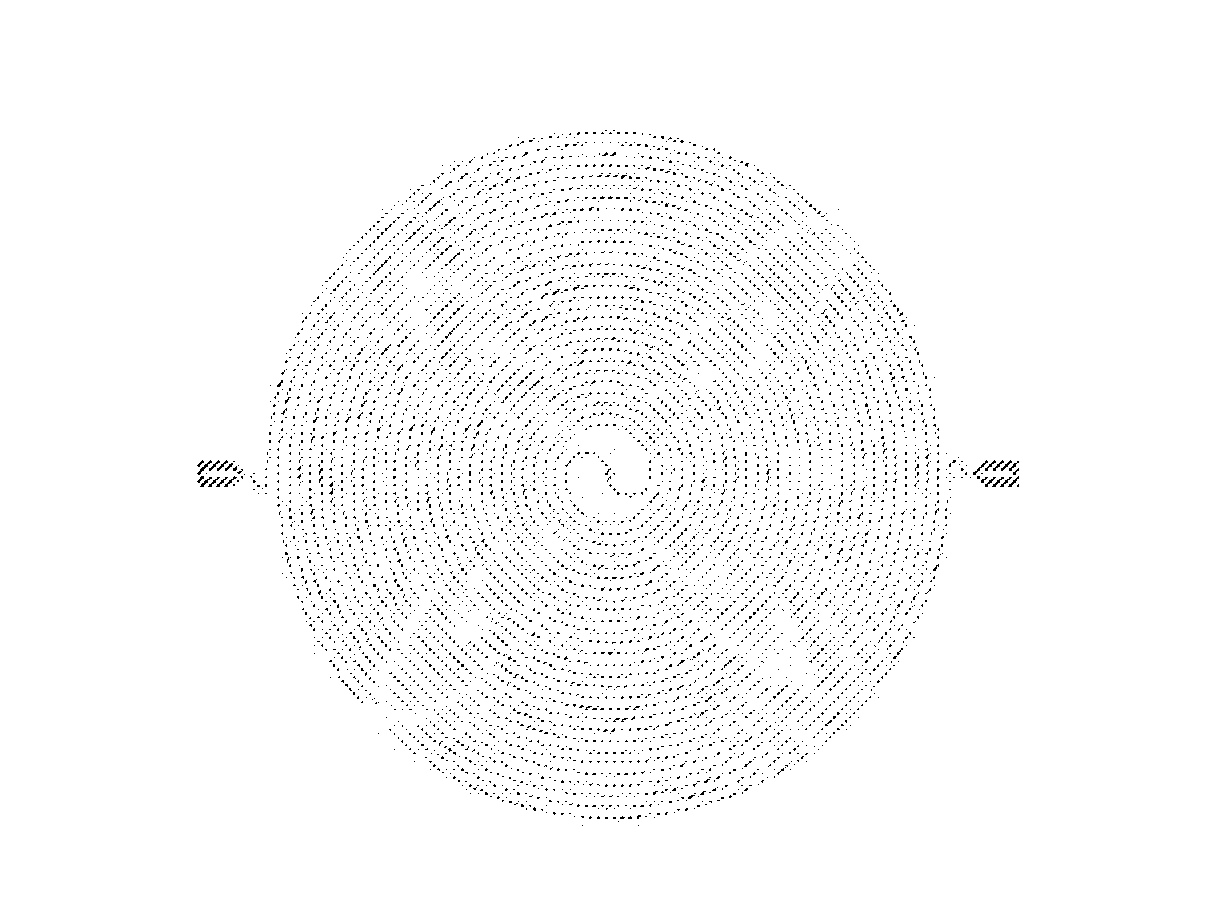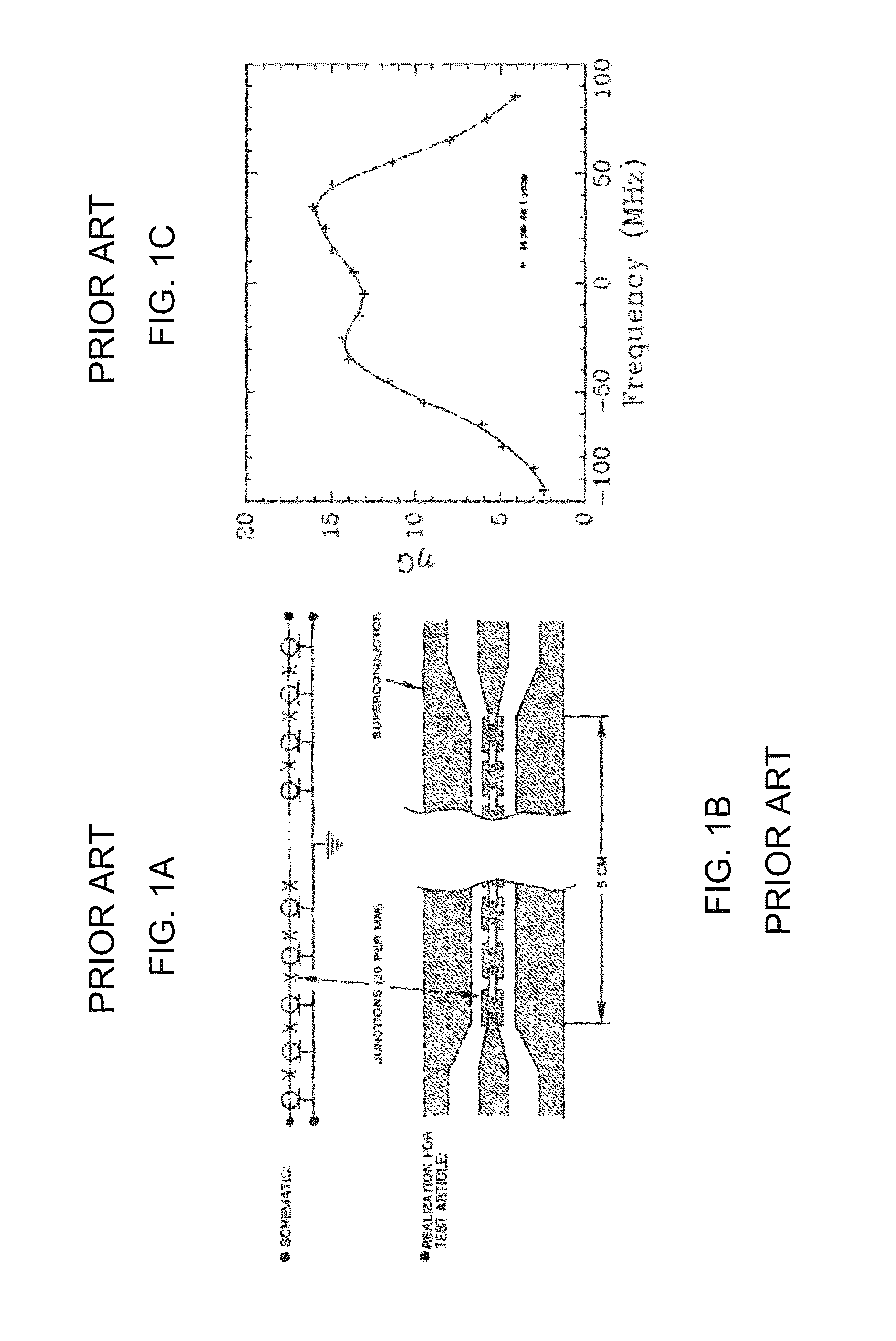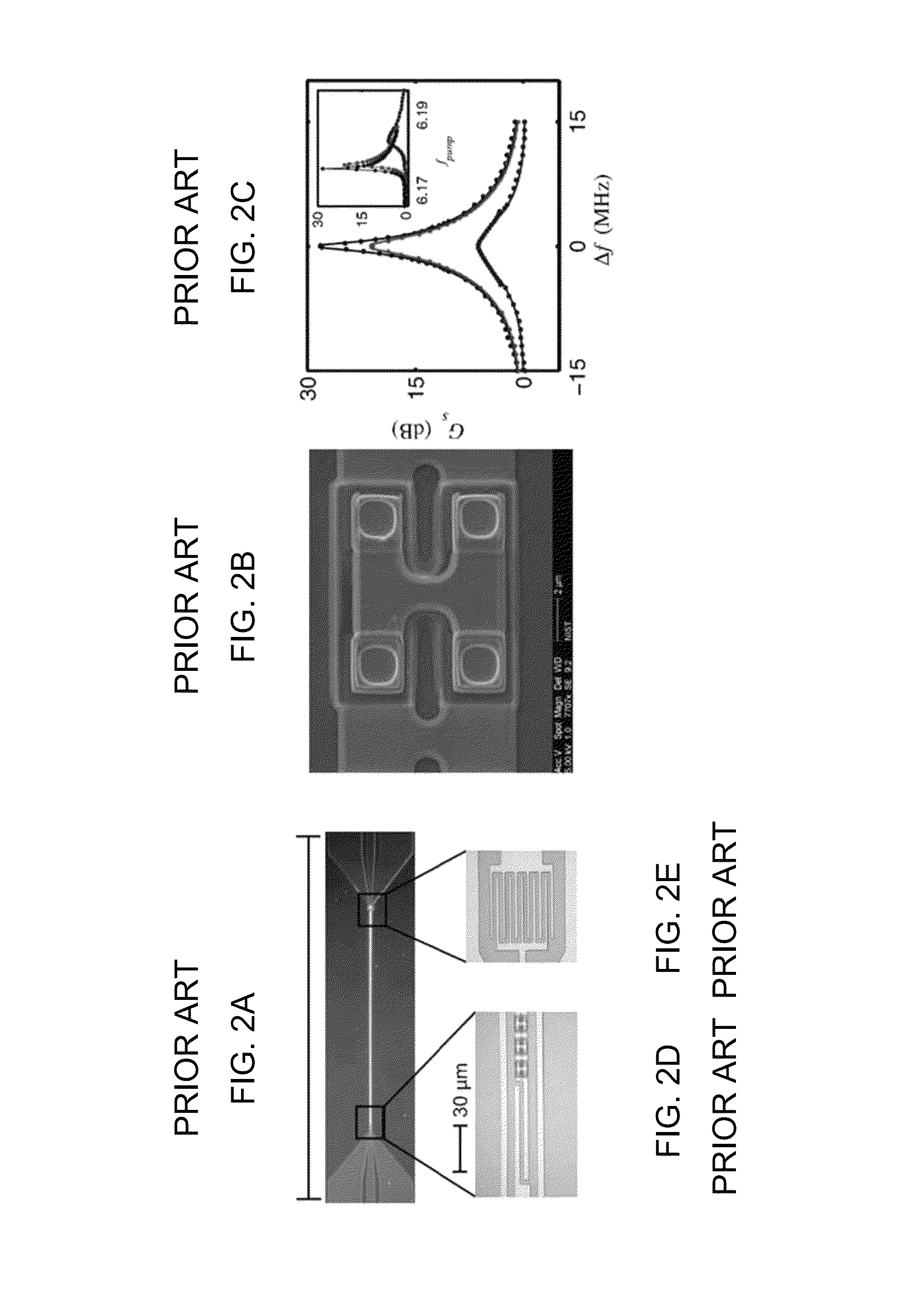Dispersion-engineered traveling wave kinetic inductance parametric amplifier
a parametric amplifier and dispersion-engineered technology, applied in the direction of amplifier types, variable-induction element amplifiers, amplifiers, etc., can solve the problems of noise performance, quantum mechanics limited noise performance, and the inability to produce excess noise,
- Summary
- Abstract
- Description
- Claims
- Application Information
AI Technical Summary
Problems solved by technology
Method used
Image
Examples
Embodiment Construction
DTWKI Amplifier Characteristics
[0062]We describe a new superconducting amplifier with exceptional performance, closely approaching the limits imposed by fundamental physics. We refer to this device as the Dispersion-engineered Traveling-Wave Kinetic Inductance (DTWKI) amplifier. Versions of this device may be implemented for operation in the microwave, millimeter-wave, and sub-millimeter-wave bands. The basic characteristics are demonstrated to be, or are expected to be, as we now describe.
[0063]The amplifier is expected to have extremely low noise and should operate very close to the fundamental limits imposed by quantum mechanics. At frequency f, this limit corresponds to a noise temperature of TQL=hf / kB, where h and kB are Planck's and Boltzmann's constants, respectively. Numerically, h / kB≈48 mK / GHz. For comparison, modern low-noise transistor amplifiers operating at cryogenic temperatures offer noise temperatures of order 1 K / GHz.
[0064]The gain bandwidth may be extremely wide, w...
PUM
 Login to View More
Login to View More Abstract
Description
Claims
Application Information
 Login to View More
Login to View More - R&D
- Intellectual Property
- Life Sciences
- Materials
- Tech Scout
- Unparalleled Data Quality
- Higher Quality Content
- 60% Fewer Hallucinations
Browse by: Latest US Patents, China's latest patents, Technical Efficacy Thesaurus, Application Domain, Technology Topic, Popular Technical Reports.
© 2025 PatSnap. All rights reserved.Legal|Privacy policy|Modern Slavery Act Transparency Statement|Sitemap|About US| Contact US: help@patsnap.com



